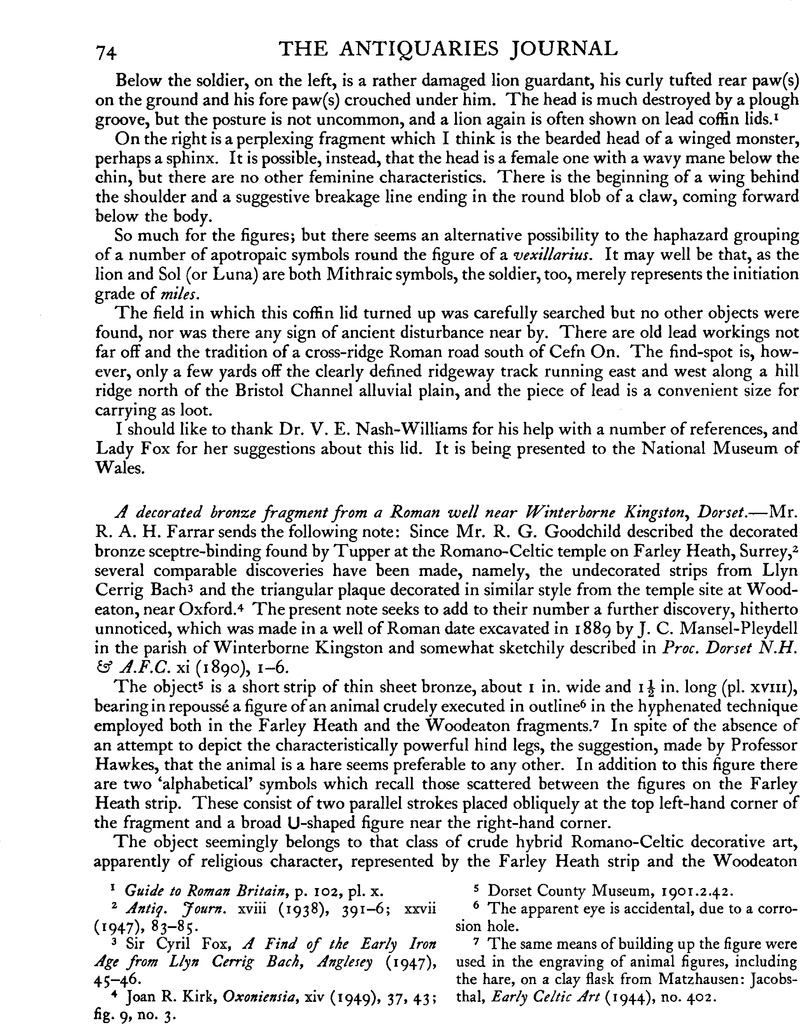No CrossRef data available.
Article contents
A decorated bronze fragment from a Roman well near Winterborne Kingston, Dorset
Published online by Cambridge University Press: 29 November 2011
Abstract

- Type
- Notes
- Information
- Copyright
- Copyright © The Society of Antiquaries of London 1953
References
page 74 note 2 Antiq. Journ. xviii (1938), 391–6;Google Scholar xxvii (1947), 83-85.
page 74 note 3 SirFox, Cyril, A Find of the Early Iron Age from Llyn Cerrig Bach, Anglesey (1947), 45–46.Google Scholar
page 74 note 4 Kirk, Joan R., Oxoniensia, xiv (1949), 37, 43; fig. 9, no. 3.Google Scholar
page 74 note 5 Dorset County Museum, 1901.2.42.
page 74 note 6 The apparent eye is accidental, due to a corrosion hole.
page 74 note 7 The same means of building up the figure wereused in the engraving of animal figures, including the hare, on a clay flask fromMatzhausen: Jacobsthal, , Early Celtic Art (1944), no. 402Google Scholar.
page 75 note 1 Miss M. V. Taylor has kindly drawn the writer's attention to the hearth, probably now to be interpreted as of ritual character, in the circular shrine adjoining the Frilford temple (Oxoniensia, iv, 36-37), and quotes the recent discovery of a hearth of flanged tiles, which had been used many times, at the centre of the cella of the Woodeaton temple.


